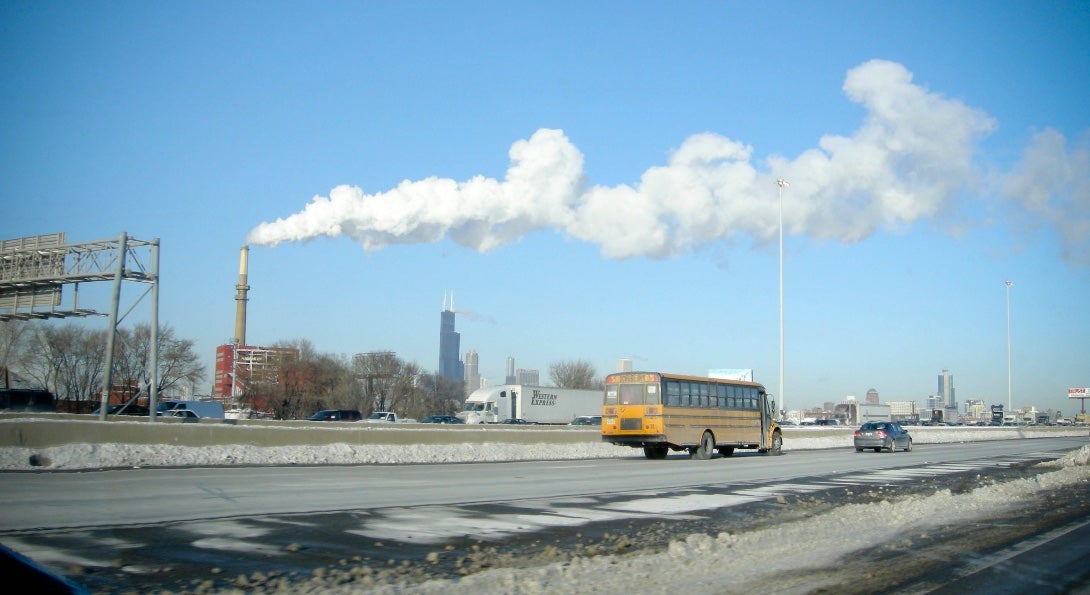Sharing the data on environmental justice and CPS schools

Story text Heading link

According to the IllinoisEnvironmental Justice Act,“Environmental justice is based on the principle that all people should be protected from environmental pollution and have the right to a clean and healthy environment.”
This law is more aspirational than reality. The equity gap between the two is the impetus for a new series of environmental health dashboards produced by Michael Cailas, PhD, associate professor of environmental and occupational health sciences (EOHS). Along with SPH students and alumni from EOHS and the Emergency Management and Resilience Planning certificate program, Cailas is identifying the specific neighborhoods and populations in Chicago most impacted by pollution and toxic exposures.
“Our team adopted a participatory approach to research aiming to provide actionable knowledge to the communities experiencing multiple environmental stressors,” Cailas said. “Dashboards are created in collaboration with local communities to demonstrate to policymakers the need for change.”
One project examines environmental hazards in southwest Chicago, in partnership with the Southwest Environmental Alliance, a coalition of community groups from Pilsen, Little Village, Back of the Yards, Bridgeport, Canaryville, Brighton Park and McKinley Park.
In an area with high percentages of children under the age of 10, these neighborhoods are home to 12 Brownfield sites contaminated with lead, petroleum products, mercury and other chemicals. Most of the sites are obsolete industrial facilities and remain unremediated.
These communities are also exposed to industries still in operation. This slice of the city has numerous Toxic Release Inventory (TRI) program sites massed around areas of dense populations. Residents are likely to be exposed to glycol ethers, xylene, toluene, TCE and zinc (dust) from those sites, among other chemicals.
Selected quote Heading link
Operation of these facilities requires a transportation infrastructure for the flow of materials and products, adding to the burden. This combination of stationary and mobile sources is likely to amplify the degradation of environmental quality, especially if climate change-related conditions intensify.
| Associate Professor of Environmental and Occupational Health Sciences
Story text, continued. Heading link
A second report examines neighborhood schools in Chicago and pollution exposure facing young students. Not surprisingly, schools on the west side of Chicago, notably in the neighborhoods of Canaryville and Back of the Yards, face the greatest burden of pollution exposure due to their proximity to TRI sites.
The net result is an unequal sharing of environmental burdens and benefits among CPS students. Latino students on the west side face a disproportionate share of proximity to TRI facilities and do not share proportionally the benefit of not having these toxic facilities at a close distance from their schools.